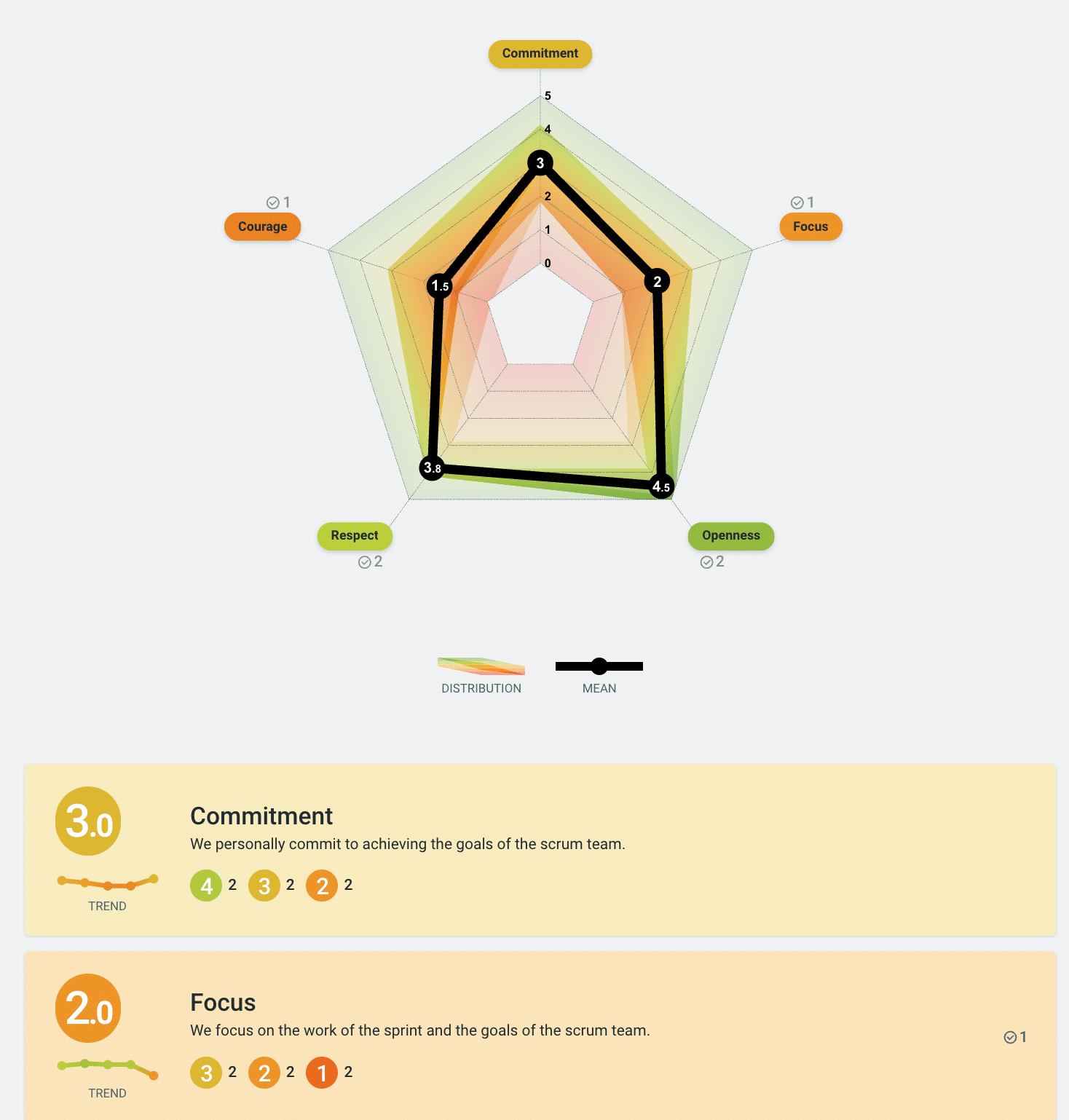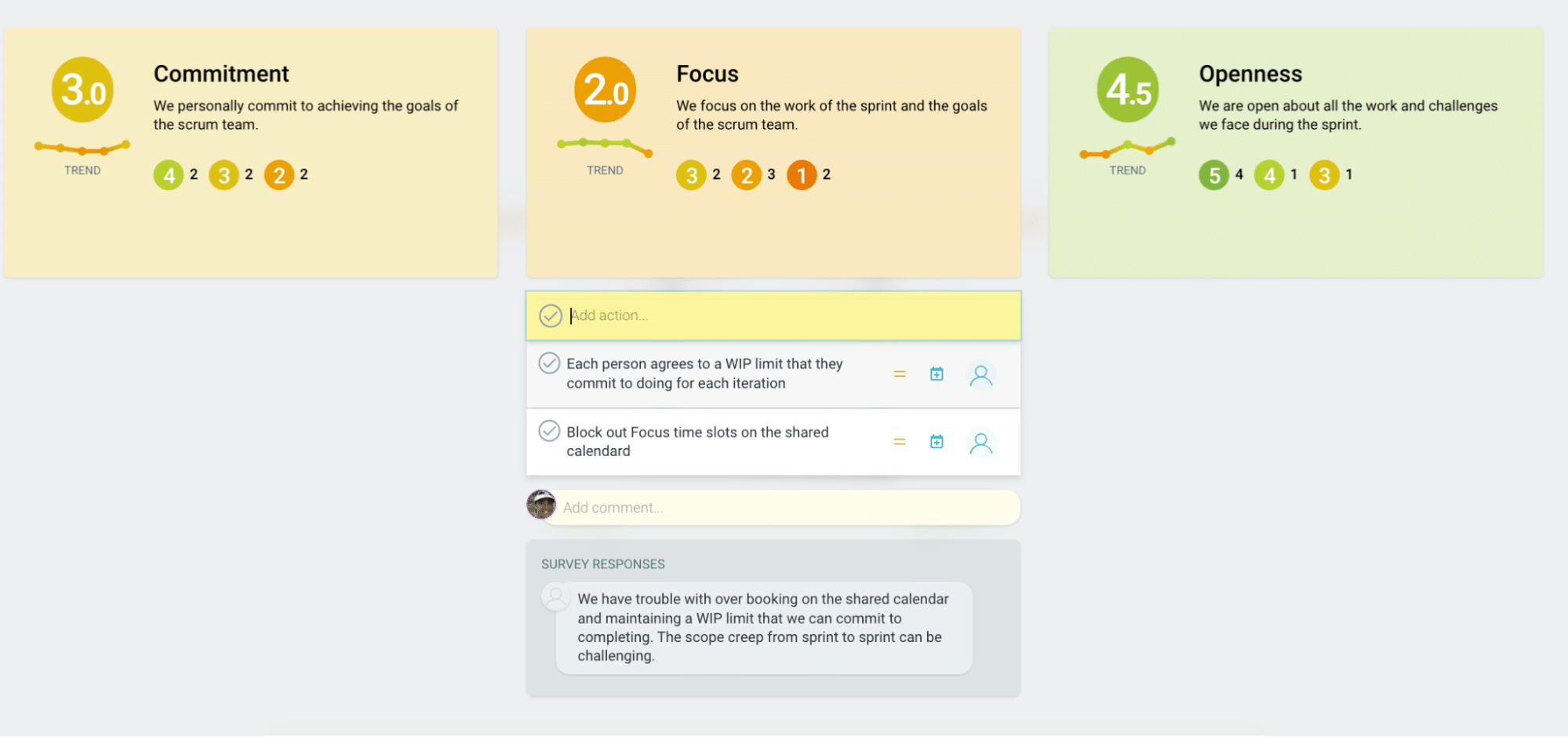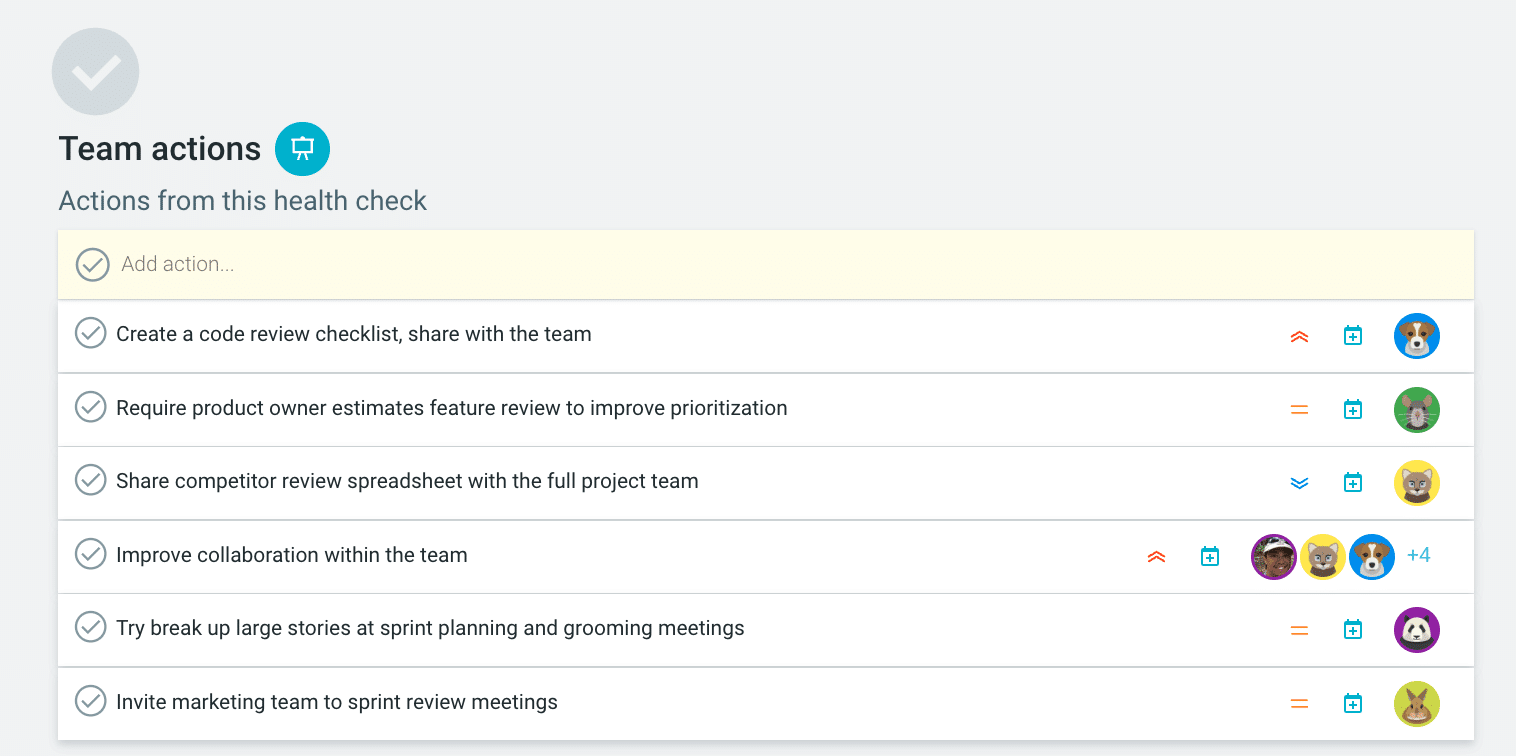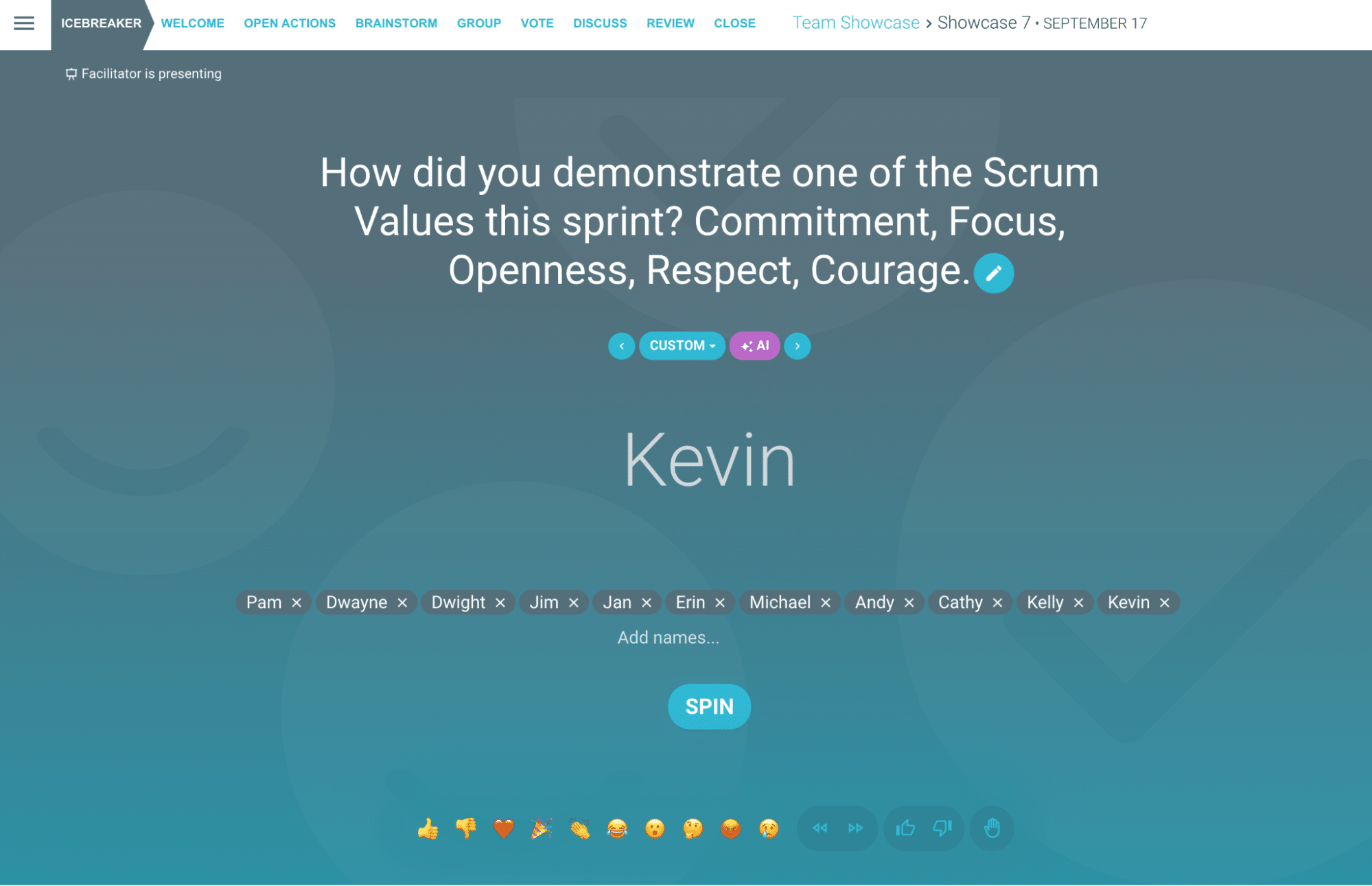Scrum Values are the “how we work together” side of agility. When they show up as day-to-day behaviors, teams deliver more consistently and learn faster. The challenge then? How do we get each person in a team to demonstrate more of the Scrum Values and create more happiness, productivity and common ground in our daily interactions.
In this post, we explore how we can get team members to reflect on the values, pick one value to strengthen and plan an action item.
What makes Scrum Values essential for Agile Teams?
The Scrum Values of Commitment, Focus, Openness, Respect and Courage keep teams aligned when work becomes complicated. They guide how teams work under pressure, how conflicts are resolved, and how goals are achieved. When lived daily, they reduce friction, surface blockers earlier, and make tough conversations easier.
Think it’s a little corny to talk about values? Imagine the opposite. What would it be like working with an uncommitted, directionless, siloed, rude and avoidant team? Nobody speaks up. You can’t rely on others and soon you lose direction and your own drive.
Moving teams from paper based values to lived practice therefore remains a goal for Scrum Masters, Agile Coaches and Agile Teams.
The five Scrum Values in practice
So what do the values look like in practice?
1. Commitment
“The Scrum Team commits to achieving its goals and to supporting each other.”
What does it look like? Keeping promises every sprint.
E.g. Aligning around a one-sentence sprint goal and adapting together when things slip.
2. Focus
“The primary focus is on the work of the sprint to make the best possible progress toward these goals.”
What does it look like? Protecting what matters most.
E.g. Prioritising work and reducing noise so the sprint goal stays on track and the product backlog is managed and groomed.
3. Openness
“The Scrum Team and its stakeholders are open about the work and the challenges.”
What does it look like? Sharing early and often.
E.g. Being transparent about progress, challenges, and blockers at daily standups.
4. Respect
“Scrum Team members respect each other to be capable, independent people, and are respected as such by the people with whom they work.”
What does it look like? Valuing others.
E.g. Respecting teams to self manage and to determine how they do the work to achieve the Sprint Goal and following the prime directive.
5. Courage
“The Scrum Team members have the courage to do the right thing, to work on tough problems.”
What does it look like? Speaking up for the Sprint Goal.
E.g Raising issues early, challenging scope creep and pushing back to stay aligned.
Scrum Values health check
Getting a picture of where your team measures up is the next step in moving forward. A Scrum Values health check in TeamRetro makes them visible, measurable, and actionable. It’s a quick pulse check that can provide some quick data points, independent /anonymous commenting and a way to get new ideas from the team, or from context driven AI that can suggest some actions based on the results.

It provides an easy way to identify low hanging fruit, lowest individual and team scores and to then discuss ways to address some of those issues individually or as a team. These can all be done in a psychologically safe way, yet reflect how individual perceptions and responses contribute to the team as a whole. Seeing the spread of responses in this case is just as insightful as aggregated scores.
Turning data into action
Here’s a quick cheat sheet on some generic action improvements for each value. However, we suggest that you use actual scores and feedback from your team and their survey responses to come up with actions, team agreements and takeaways that are valuable to you. Using TeamRetro’s AI feature, you can get more context driven action suggestions for your team to discuss.
| Value | Action Improvements |
|---|---|
| Commitment |
|
| Focus |
|
| Openness |
|
| Respect |
|
| Courage |
|
At the end of the health check, ask each team member to identify which one they’d most like to strengthen. This creates personal ownership without overwhelming people. Have them come up with one action that they can commit to and share with the team.

By combining TeamRetro’s Scrum Values health check with practical team behaviours, those values shift from abstract ideals into measurable habits that drive continuous improvement.
Whether you run it once just to get a baseline and to create a set of team agreements, or something that you want to monitor and track as your team changes or evolves, coming up with a list of agreed behaviours sets the vibe for your team.
From Scrum Values into Scrum habits
If you are running your health check in TeamRetro, you can capture, track and keep account of the action items and team agreements from your team. You can then refer to these at the next retrospective or health check. It’s a good reminder, improves accountability and can continue to motivate good habits with the team.

You could integrate this into your one on one discussions, pop it onto a poster on the office wall, or run it as part of your retrospectives to keep it on everyone’s radar.
For example, at the end of your retrospective or icebreaker question, you could ask “How did you demonstrate one of the Scrum Values this sprint? How did it help us?” This reinforces progress and normalizes experimentation. You could even take this further by running a Scrum Values retrospective.

Finally, don’t forget to acknowledge and celebrate small wins. Highlight when values do show up in practice. Use the kudos feature in TeamRetro to give team members a shout out when they have demonstrated one of the Scrum Values. It’s not just a warm cozy feeling you give, it’s a way to build resilience and examples of how values appear in your team.

Scrum Values aren’t just posters on the wall—they are the daily habits that make teams resilient, aligned, and effective. By reflecting on the values, choosing one to strengthen, turning it into a micro-behavior, checking in on progress, and celebrating wins, teams create the conditions for trust, learning, and sustainable delivery. Small, consistent actions compound into big cultural shifts.
👉 Ready to see where your team stands? Run a Scrum Values health check in TeamRetro to get a baseline, spark meaningful discussions, and capture practical action items that turn values into habits.
